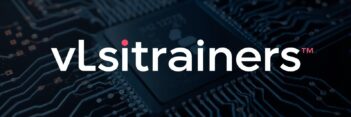Skip to content
Linux Tutorial Series for VLSI Beginners
Module 1: Getting Started with Linux
- Understanding directories and file structures
- Commands: ls, cd, pwd, mkdir
- Hidden files, home directory shortcuts (~, ., ..)
- Exercises with real examples
Module 2: File Management in Linux
- Copying, moving, and deleting files: cp, mv, rm, rmdir
- Viewing file contents: cat, less, head, tail
- Searching inside files: grep, wc
- Practice tasks for EDA log file navigation
Module 3: Input/Output Redirection and Pipes
- Standard input, output, and error
- Redirecting with >, >>, <, 2>
- Using pipes | for connecting commands
- Real-world examples: filtering logs, saving results
Module 4: Wildcards, Filename Conventions, and Getting Help
- Using *, ?, {} in filenames
- Safe file naming conventions
- man, whatis, and apropos for help
- Hands-on tips for tool commands
Module 5: File Permissions and Process Management
- Understanding file access: r, w, x bits
- Changing permissions: chmod
- Running jobs in background: &, bg, fg, kill
- Practical uses in simulation control
Module 6: Disk Space and File Utilities
- Checking disk quota: du, df, homeusage
- Compressing files: gzip, gunzip
- Searching files: find, locate
- Downloading via wget
Module 7: Environment Variables
- Viewing and modifying environment variables: env, echo, export
- Customizing .bashrc
- Editing PATH for EDA tools setup
Module 8: Software Compilation and Installation
- Extracting and compiling open-source software (tar, make, configure)
- Installation paths using –prefix
- Stripping binaries for optimization
- Use case: building and running small Linux utilities
Module 9: Shell Scripting Basics
- Writing your first bash script
- Variables, loops, and conditionals (for, if)
- Automating log checks or run sequences
- Real-world example: automating simulation runs
